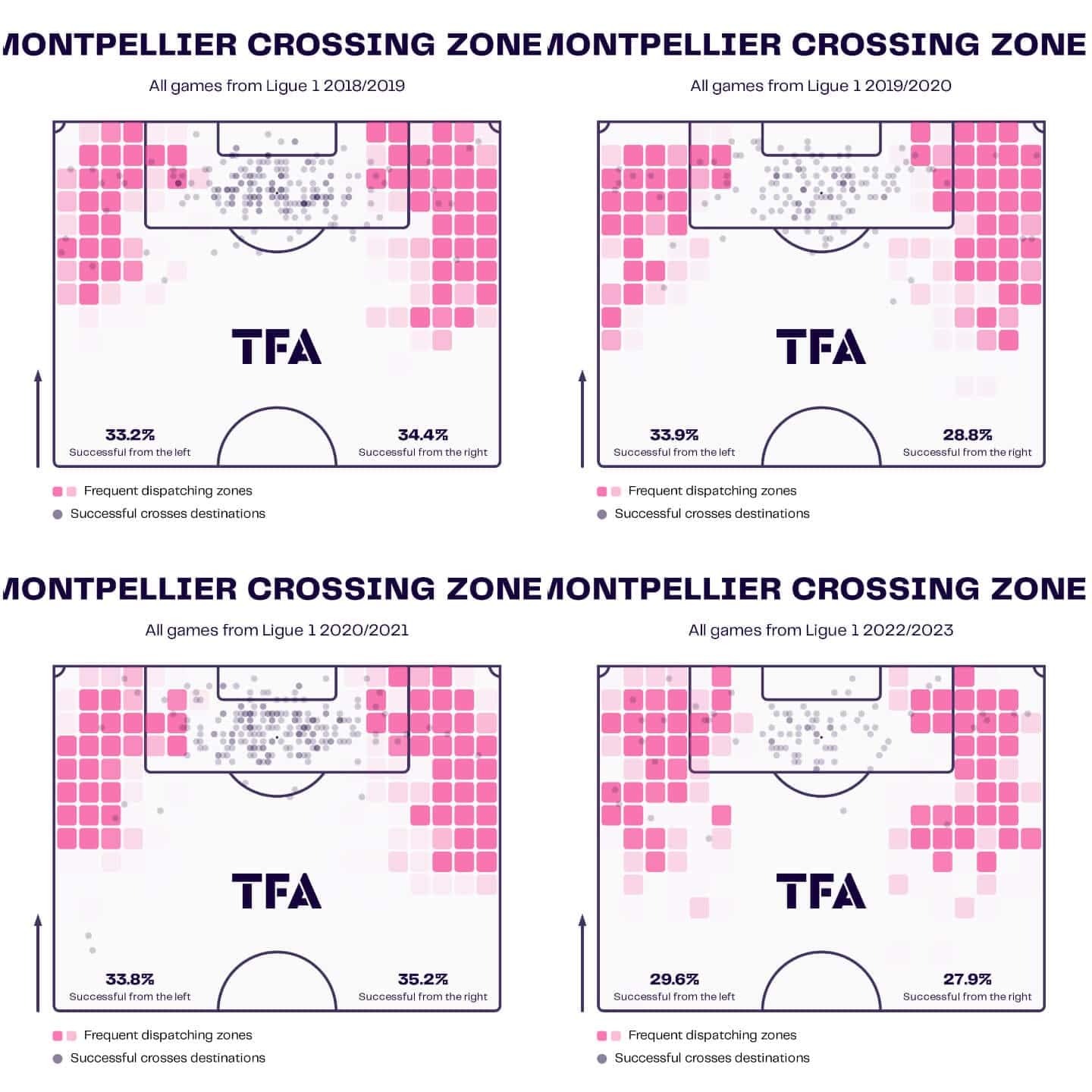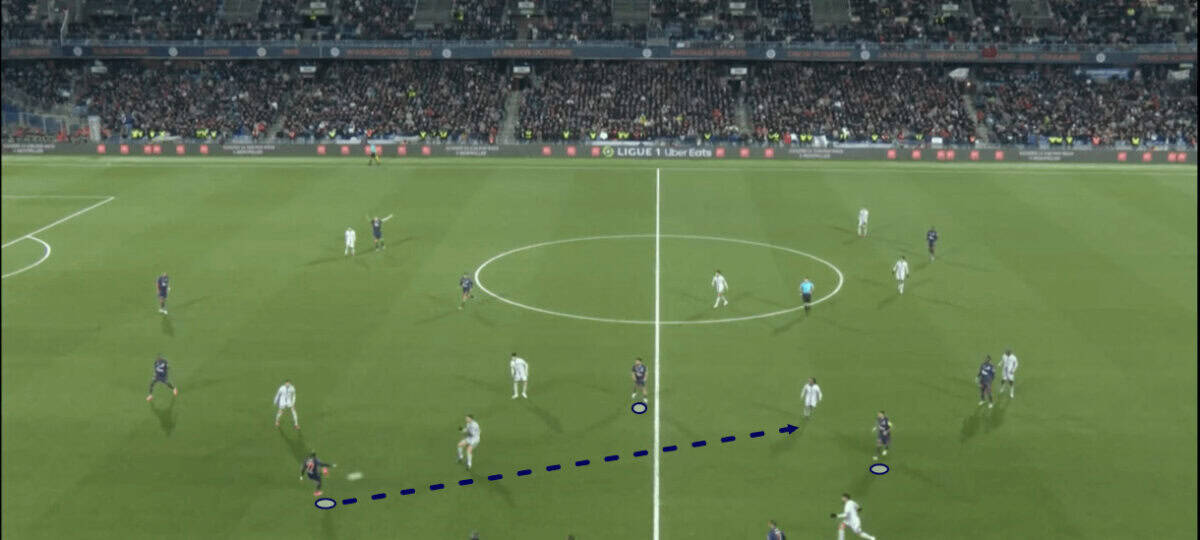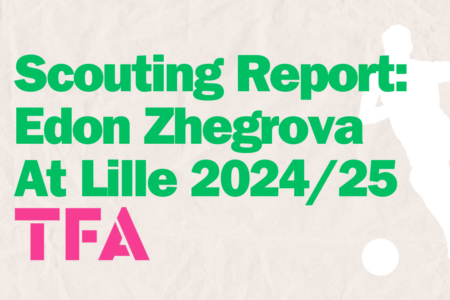‘Great knowledge of the club’: Michel Der Zakarian’s 2022/23 Montpellier return – scout report
Following a poor run in which they picked up just one Ligue 1 win in six games, Montpellier have made the decision to part ways with Romain Piteau, who took charge of a total of 11 games for La Paillade, bringing back former boss Michel Der Zakarian as his replacement.
Der Zakarian had been in charge of Brest since leaving Montpellier, where he was previously in charge from May 2017 to May 2021, until his dismissal from the Brittany-based outfit back in October. At the time of writing, the 59-year-old is set to take charge of his first game back in the hot seat at Montpellier against his former club, Brest, this weekend.
Montpellier managed to win Ligue 1 back in 2011/12 under René Girard but after their title victory, they slumped back into being a mid-lower table side. They achieved their best league finish post-2012 (sixth) under Der Zakarian in 2018/19, with the former Montpellier and Armenia defender guiding La Paillade to two consecutive eighth-place finishes the two seasons after that and a 10th-place finish the season before.
In the campaign prior to Der Zakarian’s initial arrival in 2017, Montpellier ended up in 15th place, while they finished 13th last term under Olivier Dall’Oglio. The club never finished outside the top half under Der Zakarian during his time at Stade de la Mosson — something that can be said by no other coach to have finished at least one season as Montpellier boss since Henry Kasperczak who guided La Paillade to an eighth-place finish and a seventh-place finish in 1990/91 and 1991/92, respectively.
Now, Der Zakarian takes over a team in 15th place, just two points clear of the relegation zone, embarking on a critical relegation-battle six-pointer with Brest this weekend, with Montpellier and Brest currently level on 20 points.
This tactical analysis and team-focused scout report aims to highlight some of the main areas in which La Paillade have struggled this term, resulting in their participation in a relegation fight. We’ll look at some of the most pressing issues Der Zakarian is being presented with immediately on his return to the club he’s got “great knowledge of”, as explained by Montpellier’s website when announcing his return and look at some ways in which the 59-year-old may look to solve those problems.
Ligue 1’s highest xGA
Montpellier have conceded the fourth-most goals (45) of any Ligue 1 side this term. However, they’ve also conceded the highest amount of expected goals (46.19) in France’s top flight, indicating effectively that their defence has failed to prevent their opponents from creating good goalscoring chances with regularity.
Montpellier have conceded 12.31 shots per 90 this term — the fourth-most in the league — and they’ve conceded 0.157 xG per shot — the joint-highest average shot quality conceded in Ligue 1.
When Der Zakarian was at Montpellier the first time around, his team generally maintained quite a low xGA. In 2018/19, they conceded 43.52 xG — the third-lowest in the league — while their 0.103 xGA per shot was the second-lowest in the French top flight. Meanwhile, in 2019/20, Montpellier conceded 36.41 xG (10th-highest) while conceding 0.106 xG per shot (eighth-lowest).
Der Zakarian is a coach who stresses the prioritisation of defensive organisation and discipline first and foremost if you were to describe him in a nutshell. He’s a system-focused coach but not one with ideals of conventionally beautiful football, but rather one with a specific idea in mind of how to grind out results and make his team greater than the sum of its parts; through his system, he believes he can get the most out of his players and the resources available to him.
The 59-year-old’s Montpellier side got less and less aggressive in their pressing throughout his tenure at the club. In his final season, they had by far the highest PPDA in Ligue 1 at 19.13. One could argue that the pressing got too passive during this final season but in any event, we wouldn’t expect Der Zakarian to be endorsing a high-intensity pressing style with lots of turnovers inside the final third. We’ll typically find his teams defending a bit deeper and inviting the opposition forward a bit more before deciding to engage.

A Der Zakarian side will defend in the mid-block, engaging at around the halfway line. We see an example of this from 2020/21 in figure 1. The opposition, again ironically Brest, were allowed to play to the halfway line with little-to-no pressure on the backline. Montpellier’s defensive block shifted backwards, retaining compactness between the lines and discipline to continue protecting their designated zone, not jumping out and sacrificing the defensive system’s solidity.
Each aspect of the defensive block here was key to the system’s success. One player acting out of control and jumping prematurely could open up space for the opposition to exploit and attack through. Like the blocks of a Jenga tower, the players must take care when removing themselves from their collective structure as doing so too aggressively or carelessly can have disastrous consequences for the unit.
They generally prepared to engage at around the halfway line, as the opposition began entering their half of the pitch. Ideally, Montpellier would engage on the outside at this point, rather than centrally, having hopefully already forced the opposition out into this area via their mid-block structure which would be difficult to play through centrally.
This season, with their PPDA of 12.23, ranking ninth-highest in Ligue 1, Montpellier have definitely been more aggressive than they were in Der Zakarian’s last season. They’ve pressed higher and attempted to steal the ball from the opposition backline more often, but they haven’t been incredibly efficient in terms of actually forcing high turnovers.
At times, they’ve been too easy to play through as a result of this, for instance, in their last game under Piteau, Montpellier pressed high against the opposition’s backline quite a bit, but Strasbourg were comfortable playing the ball around the back, coping with the pressure and finding an opportunity to play over Montpellier’s press, beyond the midfield, dropping the ball in front of La Paillade’s backline, hence putting the backline under a lot of pressure as they get exposed by the further forward players’ inability to stop the opposition making their way through them.
We don’t think Der Zakarian will immediately get close to how passive they were in 2020/21, but we would expect to see Montpellier be a bit more considered in their pressing, with the new coach likely to emphasise the importance of picking and choosing your moments to press and your moments to remain compact as a unit, in order to maximise the team’s defensive potential as a group.

Figure 2 shows Montpellier’s defensive actions maps from 2019/20 (left) and 2022/23 (right). This further illustrates the contrast between their defensive style under Der Zakarian and how they’ve defended this season, as we can see how their average defensive line height was significantly deeper in 2019/20 and there were far fewer defensive actions inside the opposition’s half in 2019/20 compared to this term too.
We’d expect to see Montpellier stylistically getting closer to the left and further from the right as the season progresses under Der Zakarian — whether or not that has the desired effect remains to be seen, but the 59-year-old undoubtedly showed great ability to organise his defence and generally retain a low xGA during his first tenure at Montpellier, which does give confidence.
Ball progression problems
Montpellier have struggled in terms of ball progression this season; they’ve made the fewest progressive passes per 90 (56.68) in the league while maintaining the third-lowest progressive pass success percentage (67.9%). This has contributed to issues on the ball in the final third and to La Paillade’s uninspiring defensive situation as discussed in the previous section.

Under Der Zakarian in 2020/21, as seen in figure 3, full-backs/wing-backs got forward on the wing but remained at around what you might call a wide midfielder position, looking to act as a link between the backline and the forward line, the first third and the final third. The wide men knew their role and positioned themselves well to see the pass while being prepared to receive and take the ball forward.

Figure 4 helps to illustrate how these wide men always tried to make themselves a viable option for the deeper player looking to move the team forward. Indeed, they had an offensive role in which they looked to get forward but primarily, they ensured they didn’t break that link between themselves and the centre-back/goalkeeper. Primarily, they remained available to them. We can see how this helped Montpellier slice through their opponents in figure 4. The positioning of the full-back stretched the opposition, allowing the full-back to use the central midfielder who could enjoy some space to receive and then quickly play the through ball into the opposition’s half.

This season, Montpellier’s wide men have failed to keep that link to the deeper ball carrier intact quite often, resulting in cheap, dangerous ball losses as we see in figure 5. Here, the wide man was running forward but didn’t pay enough attention to the pass coming from midfield; he focused too much on getting forward and not enough on maintaining the link to the deeper player. As a result, he failed to receive the ball as the opposition intercepted and drove forward to attack Montpellier’s weakened (as a result of the team losing the ball with the full-backs sent forward) backline.

Again, carelessness/sloppiness killed Montpellier’s ball progression in figure 6, as this attempted forward pass was intercepted by an opposition player before it reached the player at the tip of this wide diamond. The pass was probably not really on here and even then, the execution was fairly poor, leaving the interception a relatively easy job for the defensive player.

Wide diamonds are a common feature of many teams in the progression/chance creation phases; we see an example of Der Zakarian’s Montpellier utilising one back in 2020/21 in figure 7. It was common to see the centre forward drop out and become the tip of the diamond in the chance creation phase, as was the case in this example.
In 2020/21, for example, Der Zakarian’s Montpellier played the 10th-most progressive passes per 90 (64.59) in Ligue 1, while they had the eighth-best progressive pass success rate (75.9%). Both of these numbers present a stark difference to the 2022/23 campaign. Der Zakarian will be aiming to iron the wrinkles out of his side’s progressive passing game and put an end to the many sloppy mistakes that are plaguing La Pallaide’s play in the ball progression phase, at present.

Figure 8 presents Montpellier’s progressive passes from 2022/23 (left) and 2020/21 (right). One of the more interesting things this figure shows is how Montpellier made far more progressive passes from deep, wide areas in 2020/21, whereas they’ve been few and far between this season. Again, this may be a result of the full-backs’ roles switching from being a connector to being an all-out attacking outlet but with how their progressive passing has failed to improve in that time, perhaps Der Zakarian will look to revert to how his Montpellier side did things in the past, or at least something more similar to that.

Additionally, key playmaker Téji Savanier typically played a deeper role under Der Zakarian, whereas he’s got a freer role now, typically occupying more advanced positions. Perhaps we’ll see Der Zakarian look to drop Savanier a bit deeper again in order to help the team out with his quality on the ball earlier on in possession. Figure 9 shows how his progressive passing game has evolved over the years and moved further forward.
Chance creation
Finally, Montpellier have generally performed quite well in chance creation this season; they’ve scored the 11th-most goals in the league (31) and it would appear as though their defensive deficiencies should be the main focus for Der Zakarian — which is largely true, in our view.
However, Montpellier have generated just 27.51 xG this term — the third-lowest in Ligue 1 — while they’ve generated 0.124 xG per shot — the joint-fourth-lowest in France’s top flight. These numbers also rank in the area Montpellier don’t really want to be, so it’ll be far from just “keep up the good work!” from Der Zakarian to his team on the offensive front as well; there’s also plenty of work to be done here.
In 2020/21, Montpellier finished the season with the sixth-highest xG (57.45) and the joint-eighth-highest xG per shot (0.13). Der Zakarian succeeded in gradually improving the team’s xG per shot over time from 0.091 in 2017/18 — the second-lowest in Ligue 1 that term.
The general standard of xG per shot has improved in Ligue 1 over the last few seasons and as a result, now, Montpellier’s 0.124 xG per shot has them lingering around the worst in the league for this particular metric. So, Der Zakarian is tasked with once again helping this team to improve in this area but as his first tenure showed, it doesn’t happen overnight.
But how can we expect Der Zakarian to influence his new team in the chance creation phase?

Star striker, 20-year-old Sepe Elye Wahi whom Total Football Analysis published a scout report about back in July titled: ‘Sepe Elye Wahi 2021/22: Montpellier’s Golden Boy nominee with as many non-penalty goals as Neymar – scout report’ and who’s since been linked with clubs like EPL leaders Arsenal and their rivals Tottenham, has done well in front of goal this term and maintained a solid 0.2 xG per shot.

Typically, his movement is an excellent tool for his team in front of goal. Figure 11 shows Wahi initially peeling off the defender’s shoulder as his team enters the final third.

This creates the necessary separation for him to get some freedom and space to receive the low cross and generate a shot from a good position just on the edge of the six-yard box, as we see in figure 12.

Figure 13 shows how Wahi can also be utilised as a great weapon when the team is looking to exploit space behind the opposition’s backline. He’s typically good at timing his runs and keeping himself onside until the pass is played through to him. He loves making these types of runs where he can accelerate off the defender’s shoulder and burst into space beyond the opposition’s backline.
With Der Zakarian likely to get the team dropping off more in defensive phases, thus opening up more space behind the opposition’s backline to exploit on regaining possession, and if he can influence some improvement on the ball progression side of things, Montpellier should be able to create more and more opportunities to find Wahi with balls in behind targeting this space and the player’s movement.

Further, crossing from deep, wide areas was a significant part of Montpellier’s game in chance creation previously under Der Zakarian. We can see from figure 14 how crosses from these areas have diminished compared to how frequent they were during Der Zakarian’s tenure, as well as how much less successful La Paillade’s crossing has been of late compared to during Der Zakarian’s tenure.
On the 59-year-old’s Montpellier return, we expect to see increasing the team’s frequency of crossing from deep, wide areas to be something the new manager will explore with his side, as well as efforts being made to drastically improve their crossing success given how significantly it’s dropped off compared to before and how important this was to Der Zakarian’s team.
Conclusion
In conclusion of our tactical analysis, it’s clear Der Zakarian has work to do. All across the board. However, we hope our scout report has shown potential ways in which the 59-year-old could look to solve some of La Paillade’s most pressing problems in a logical way based on what we know about the Armenian coach’s philosophy and previously-employed tactics.



